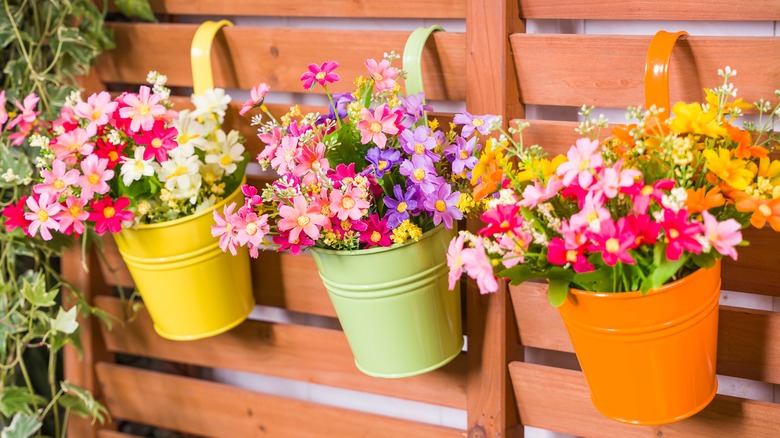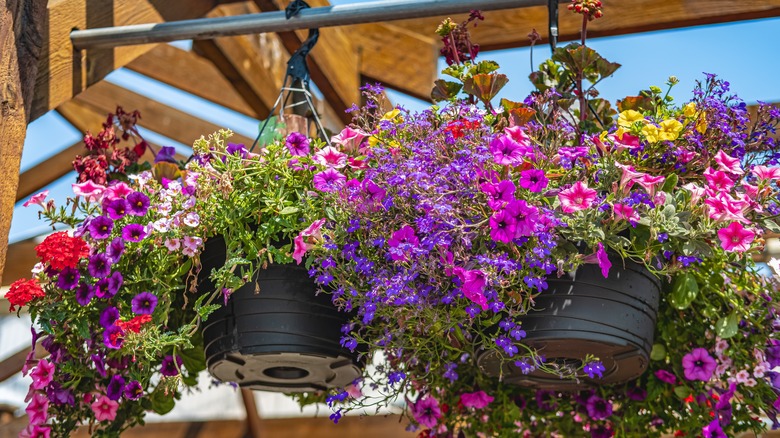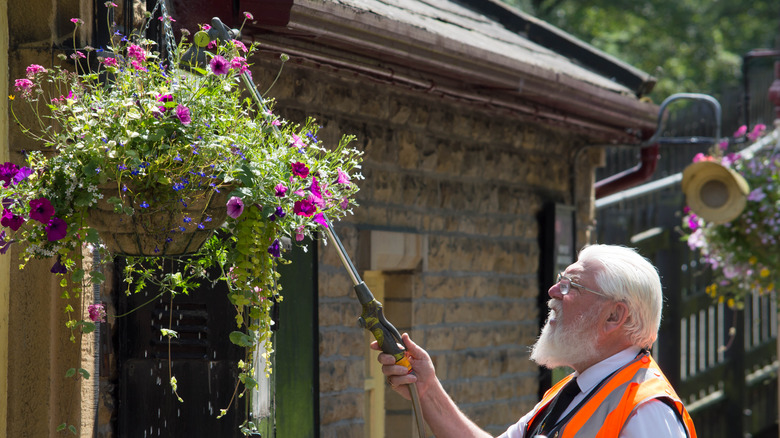Essential Tips To Ensure Your Flowers Thrive In A DIY Hanging Basket
Hanging baskets can quickly add color and life to porches, patios, and fences. Whether they're hung from a shepherd's hook, the side of a fence, or secured to a ceiling or overhang, they're an easy way to add flowers to areas that might otherwise look drab or sterile. While premade hanging baskets can easily be purchased from garden centers, it's fun and easy to make your own as you can choose your favorite flowers and ensure they complement your landscape and décor. As long as you pick an appropriate basket and liner, make sure to use plants that have similar growing needs, and remember that plants in containers often need some extra attention, your DIY hanging basket should thrive all season long.
There are a wide variety of options for hanging basket containers. They range from simple plastic pots to elaborate wrought iron baskets. If you opt for a plastic container, check that it has drainage holes in the bottom or add your own if necessary. Most metal hanging baskets require a liner to ensure your plants and soil don't fall through. Coconut fiber and moss are both popular biodegradable liner options that keep your plants secure while allowing for plenty of drainage.
Choosing plants for your hanging basket
While it is fun to consider the aesthetics of your hanging basket and create beautiful color combinations, it's even more essential that the plants you put together have similar water and light requirements. You should also take into account how much sunlight your hanging basket will get once it is installed. Pairing succulents, which can easily develop yellow leaves and even rot due to overwatering, with moist-soil-loving begonias is a recipe for disaster. Not only do they not have similar watering needs, but most succulents require full sun, while begonias usually grow best in part shade. Instead of setting your plants up for failure, pair together plants like petunias and string of pearls, which are both drought-resistant flowers perfect for hanging baskets located in full sun. You can also opt to use just one type of plant. This is not only easier but can also be beautiful, especially if you use trailing flowers, which are perfect for hanging baskets.
It is also important to take into account how quickly the plants grow. Slow-growing plants can quickly be overrun by fast-growing companions, causing them to disappear completely. While it's tempting to overstuff baskets with plants so they look full immediately, this can backfire as the season goes on and the plants outgrow their container. Aim to use only 3 to 5 plants in a basket with a 12 inch diameter to prevent overcrowding.
Caring for your hanging basket
Once you have planted your hanging baskets and hung them up, they should provide you with a full season of color as long as you take good care of them. Remember that plants grown in hanging baskets, like those grown in other types of containers, generally require more water and fertilizer than they would if they were planted in the ground. Not only are water and fertilizer lost due to drainage from the bottom of the basket, but flowers in hanging baskets are usually planted much closer together than they would be otherwise.
Many annual flowers require regular deadheading to keep them blooming well, so stay on top of maintaining the plants in your basket. You may also need to prune and shape the plants to create the look you want and to encourage trailing plants to grow over the sides of the basket. Of course, this will depend on the plants you select for your hanging basket, so always do your research. Finally, don't be afraid to let your hanging baskets evolve as the season goes on; if some plants are struggling, it's okay to remove them and swap them out for other flowers that may perform better.


